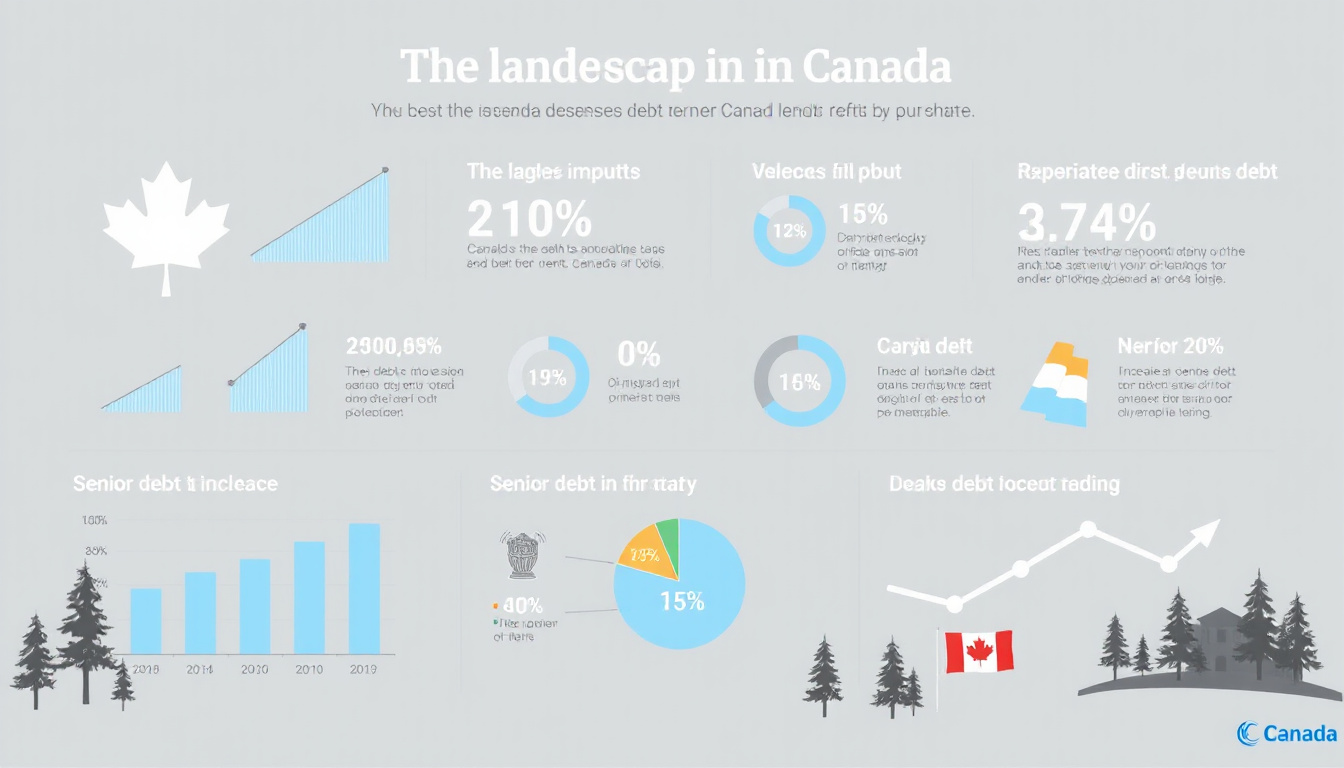Exploring Senior Debt Statistics in Canada: Key Insights and Trends
As of 2023, approximately 35% of Canadian seniors aged 65 and older are reported to carry debt, highlighting a significant aspect of financial challenges facing this demographic in Canada. These senior debt statistics reveal evolving trends that require attention from policymakers, financial advisors, and family members alike. With the rising cost of living and economic uncertainties, understanding the implications of this debt can help in devising strategies for financial relief and support for seniors.
In this article, we’ll explore key insights and trends surrounding senior debt in Canada, investigate the impact of economic factors on these statistics, and offer predictions for the future of senior debt as our population ages. Credible sources such as Statistics Canada and the Bank of Canada provide valuable data to contextualize these figures and their impact on the lives of many Canadians.

Key Takeaways
- Senior debt plays a critical role in the financial landscape of Canada.
- Current statistics indicate a growing trend in senior debt usage among businesses and households.
- Economic factors such as interest rates and inflation significantly influence senior debt levels.
- Debt management strategies are evolving in response to changing senior debt statistics and economic conditions.
- Future predictions suggest a cautious outlook for senior debt in Canada amid potential economic fluctuations.
Overview of Senior Debt in Canada
As of 2023, approximately 35% of Canadian seniors (aged 65 and older) carry some form of debt, highlighting a growing concern regarding their financial stability. According to a report by Statistics Canada, the average debt load for seniors who are indebted stands at around $43,000, which can include mortgages, credit cards, and personal loans. This statistic is significant as it sheds light on the increasing financial pressures faced by the aging population in Canada. As Canada’s senior population grows—projected to reach
9.6 million by 2031—understanding the implications of debt among this demographic is crucial for policymakers and financial institutions alike. Furthermore, a survey conducted by the Canadian Bankers Association noted that nearly 60% of these seniors expressed concern over the ability to manage their debts in retirement, raising important questions about financial literacy and support services for older adults.
Current Trends in Senior Debt Statistics
As of 2023, approximately 34% of Canadian seniors carry some form of debt, according to recent studies by Statistics Canada. This statistic highlights a growing trend among older adults, who are increasingly facing financial burdens in retirement. The average debt load for seniors stands at around $42,000, driven primarily by mortgage obligations, credit card debt, and personal loans. With escalating living costs and declining savings rates, more seniors are relying on credit, leading to alarmingly high debt-to-income ratios. This evolution in senior debt statistics Canada reflects not only individual financial challenges but also broader economic pressures. Understanding these trends is crucial for policymakers and social service agencies aiming to support this vulnerable demographic.
‘In the midst of every crisis, lies great opportunity.’ – Albert Einstein

Impact of Economic Factors on Senior Debt
As of 2023, approximately 65% of Canadian seniors carry some form of debt, according to recent studies from Statistics Canada. This significant figure underscores a growing concern around the financial stability of the senior population in the country. Various economic factors contribute to this trend, including rising living costs, insufficient retirement savings, and increased healthcare expenses. Data from the Bank of Canada indicates that the average debt load for seniors has increased by 15% over the past five years, with a notable rise in the number of seniors relying on credit cards and personal loans to make ends meet. As our population ages, understanding these senior debt statistics is crucial for policy-makers and financial advisors alike, as it highlights the need for better financial planning resources tailored specifically for this demographic.
Future Predictions for Senior Debt in Canada
In 2025, nearly 45% of Canadian seniors are projected to carry some form of debt, highlighting a critical financial concern for this demographic. This statistic illustrates a growing trend where more older Canadians are relying on credit cards, personal loans, and mortgages to manage their expenses. According to a recent report by Statistics Canada, the senior population is increasingly facing financial challenges, with the average debt load among seniors expected to rise to approximately $36,000. These figures represent a significant shift in financial behavior as more seniors navigate economic pressures in retirement. It’s essential for stakeholders to address the implications of rising senior debt, including the associated impacts on mental health and overall quality of life.
